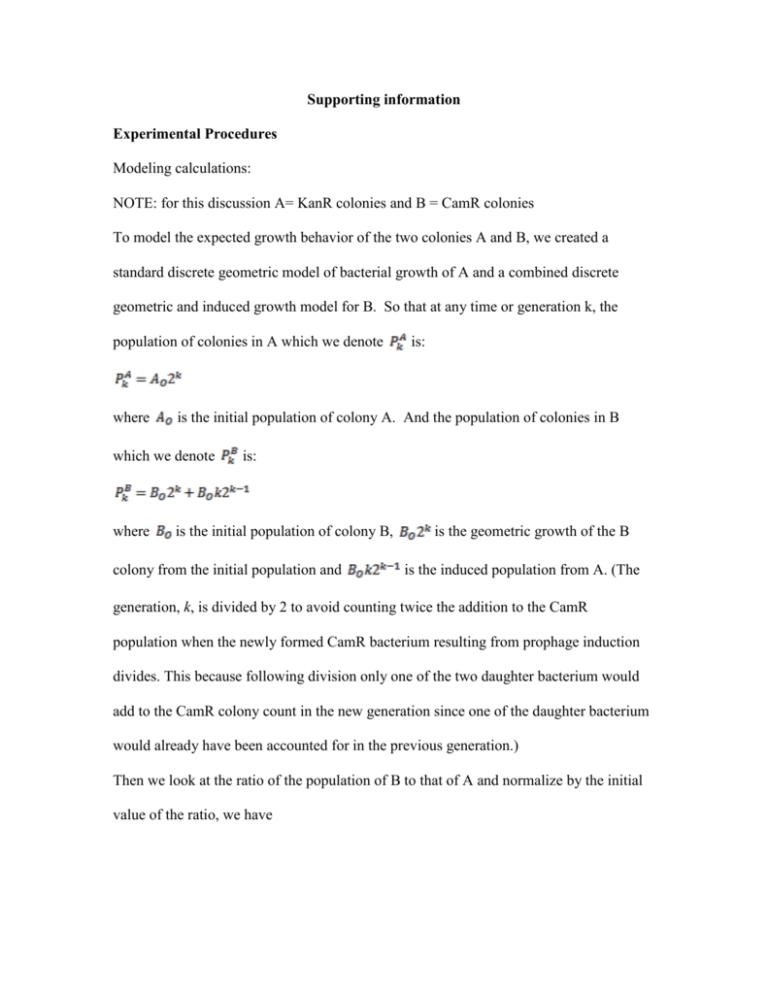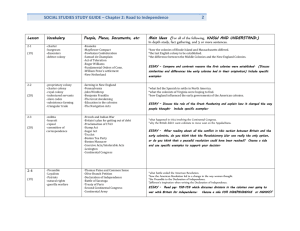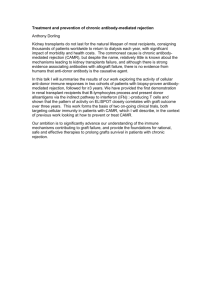Supporting information Experimental Procedures Modeling
advertisement

Supporting information Experimental Procedures Modeling calculations: NOTE: for this discussion A= KanR colonies and B = CamR colonies To model the expected growth behavior of the two colonies A and B, we created a standard discrete geometric model of bacterial growth of A and a combined discrete geometric and induced growth model for B. So that at any time or generation k, the population of colonies in A which we denote where is the initial population of colony A. And the population of colonies in B which we denote where is: is: is the initial population of colony B, colony from the initial population and is the geometric growth of the B is the induced population from A. (The generation, k, is divided by 2 to avoid counting twice the addition to the CamR population when the newly formed CamR bacterium resulting from prophage induction divides. This because following division only one of the two daughter bacterium would add to the CamR colony count in the new generation since one of the daughter bacterium would already have been accounted for in the previous generation.) Then we look at the ratio of the population of B to that of A and normalize by the initial value of the ratio, we have We can also account for the possible delay in the induced growth of B where d is the number of time steps that are required for B to be repaired and begin growing We can program this equation in MATLAB from MathWorks as for m=1 : 3 d=m-1; for k=1 : n; if (k-d) >=0 ratio (k,m)=1 + (k-d) *2 ^(-d-1); else ratio (k,m) =1; end end end











